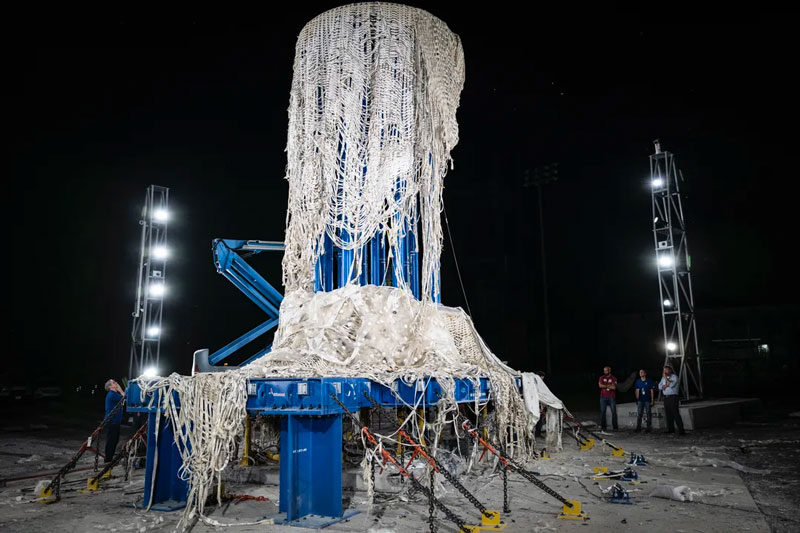In June, Sierra Space’s LIFE inflatable space module was tested again. The module was blown to shreds, but engineers are happy with the result – the parameters recommended by NASA for maintaining pressure in the module with 4 times the base pressure were increased by an additional 22%. This is even more safety for astronauts living in such an inflatable module in orbit.

Image source: NASA
Sierra Space is working with NASA and colleagues to design a future commercial orbital station that can be expanded with highly durable inflatable modules. The module, made from steel-strength Vectran fibers, includes inserts for expansion with other modules, as well as for embedding portholes. The recently exploded prototype module received even lighter inserts for these purposes, the company said.
The previous structural strength tests took place in January 2024. Then the prototype LIFE (Large Integrated Flexible Environment) module was pressure tested, which created a peak force of 4.27 kg for every centimeter of its surface. June tests of a module with a height of 6 m (about the size of an average American house) were carried out with an increase in pressure to 5.2 kg/cm2. This value was 22% higher than the safety limit recommended by NASA in the form of 4 times the pressure in the module normal for astronauts to live.
Exceeding safety parameters opens the way to increasing the size of the module—the living space for the crew in orbit. In particular, it becomes possible to increase the volume from 10 m3 to 1400 m3. Sierra Space promises to create a prototype of the module with a volume of 500 m3 next year and then explode it to confirm the required safety parameters.